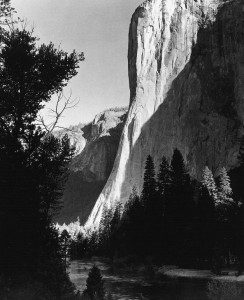In any piece of creative writing, using the verbs was or were is bad writing technique. Nothing will bore your readers faster than a few paragraphs peppered with the verbs: was, were or their cousins is, are, am, and have been.
Collectively, these are called ‘to be’ verbs. Technically, be and being are also in the group, but they usually are not a problem. Was and were are the real troublemakers. Shoot to kill whenever you spot one.
One of my critique group leaders, James Wilber, told our team whenever he typed the words was or were, he would stop — and not proceed until he found a better way to communicate his idea.
Why Are Was and Were Bad?
There are several reasons. Let’s look at some examples.
Was and Were Are Non-Specific
Consider this sentence.
She was hot.
Which did the writer mean?
She felt hot.
She looked hot.
She felt feverish.
By replacing was with a more-descriptive verb, the meaning becomes clear.
Was and Were Are Lazy
For example:
She was on fire.
With just a little effort, the sentence comes alive.
Twerking in her red dress, she owned the dance floor.
All of us get lazy from time to time. When you catch yourself using was or were, invest a little extra time to describe the scene you see in your brain.
Was and Were Facilitate Passive Voice
Often, was and were are used in conjunction with another verb to create a passive voice sentence. We all know that passive voice is b-o-r-i-n-g.
She was hoping he wouldn’t notice.
Less is more.
She hoped he wouldn’t notice.
An alarm should sound inside your head every time your fingers type was or were followed by a verb ending in ‘-ing’.
Was and Were Are Often Used to Tell
When you catch yourself using was and were, you are probably telling, not showing.
Of course there are times when it is okay to tell your readers things. But most often, showing them is much more effective. Here’s an example of using was to tell.
Ben was cold. He shivered as he was watching the sun rise over the mountains.
It takes some work to show the readers what Ben is experiencing. But the results are worth the effort.
Ben stood nearby with his hands in his jacket pockets, shivering as he watched the stars fade from view. Soon the sun peeked over the eastern summits and lit the tops of the tallest mountains to the west. Then, like honey poured over a batch of breakfast rolls, the sunlight oozed down the mountainsides and settled in the valleys.
Showing is so much better than telling.
Summary
I challenge you to adopt the James Wilber technique of stopping whenever you type the words was or were and not proceeding until you find a better way to communicate your idea.
Of course, there are times when you will decide to use was and were. But the exercise will raise your writing to new level. Your readers will thank you.
Your thoughts and ideas are always appreciated. Please share your comments below.
Comments
Related Posts

My Inside-Out Character Development Model
To develop realistic characters that engage readers, I use an inside-out character development model. Here is how it works.

Join a Critique Group
My brother recommended joining a critique group. It turned out to be the best writing tip I’ve ever received, not only did I finally receive quality feedback. I found friends who shared common goals.

Scene Planning: Visualize Scenes Like a Master
I realized if I truly desired to master the arts of writing and storytelling, I needed to invest more time and energy planning before writing. These are the eight steps I now take before writing to visualize scenes.

Choosing the Best Novel Writing Software
Novel writing software should speed the process of capturing your words, formatting your work for sharing and incorporating feedback. Here are my recommendations.


